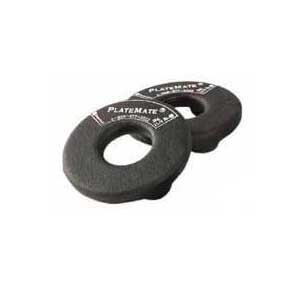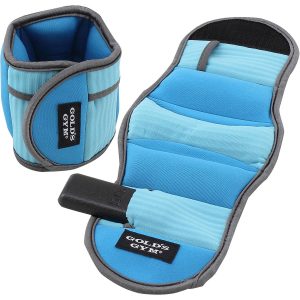Hey everyone! This is a Q & A from our Question Bank:
QUESTION
I’ve wondered how you could do linear progression on dumbbells, since the increments are bigger than on a barbell.
ANSWER
I’ll answer this from experience only. I’ve run into this same question many times both in my own training and with clients. I’m sure there are many other ways to go about solving this, but these are the solutions I used in the past that served me quite well and more importantly got the result we were after.
FRACTIONAL PLATES
Plate mates.
- We’ve all seen them at some time in our travels to various gym across the country. They are those little weighted doughnuts that have magnets on them. They usually weigh between 1.25 and 2.5lbs. The most common are the ones under the brand name “plate mates.” These are a fantastic way to progress in a linear fashion using dumbbells. 5 weeks of progression may look like this:
- Week 1 – 20lbs
- Week 2 – 22.5lbs
- Week 3 – 25lbs
- Week 4 – 27.5lbs
- Week 5 – 30lbs
 Ankle/wrist weights
Ankle/wrist weights
- It’s amazing to me that this is so rare and that people don’t think of this. I came up with this idea when I was finding ways to use heavier dumbbells when the gym only had up to 90lbs. I bought 5lb ankle weights and strapped them to my wrist/arm. If I was using the 90lb dumbbell and I had a 5lb ankle weight on my wrist, I was using 95lbs. If I had two 5lb ankle weights on my arm, I would be using 100lbs. Ankle weights come in a variety of weights so it makes smaller incremental increases possible. I have 2 pair of 1.5lb ankle weights, so here is how a progression on side lateral raises might look over the course of 7 weeks.
- Week 1 – 20lbs
- Week 2 – 21.5lbs (20 plus one ankle weight)
- Week 3 – 23lbs (20 plus two ankle weights)
- Week 4 – 25lbs
- Week 5 – 26.5lbs (25 plus one ankle weight)
- Week 6 – 28lbs (25 plus two ankle weights)
- Week 7 – 30lbs
SLOWER, BUT STILL LINEAR, PROGRESSION
Monthly progression
- Increasing load every month or so is also a form of linear progression. A certain amount of restraint and discipline has to be shown by simply adhering to a plan that we know works. This is opposed to training for the “feelz” on any given day. However if you stick to a load, set and rep scheme for an entire month, progression can be made in a month to month fashion. Failure hardly ever occurs and if it does, it happens after 3 to 4 months (12 to 16 weeks) of adherence. Dumbbell curls might look like this.
- Month 1 – 25lbs x 3 sets of 10 twice every week.
- Month 2 – 30lbs x 3 sets of 10 twice every week.
- Month 3 – 35lbs x 3 sets of 10 twice every week.
- Month 4 – 40lbs x 3 sets of 10 twice every week.
This can even be combined with the fractional plate strategy as outlined previously when 5lb increases per month are not possible, making progression even slower. Boring yes, but very effective. Especially for body part specialization.
Block to block Progression
- Increases in load that are only done once every 5 to 6 weeks or from block to block (apples to apples) is also a form of very slow linear progression. Use the same load, set and rep scheme and adhere to that for a month of high volume (3 x 12). Intermittent 2 week “intensity cycles” where an increase in load can be made, with an according re-arranging/matching volume (4×9) can then be alternated in shorter blocks. Dumbbell Triceps kickbacks may look like this.
- Weeks 1 to 4 – 20lbs x 3 sets of 12 twice every week.
- Weeks 5 & 6 – 25lbs x 4 sets of 9 twice every week.
- Weeks 7 to 11 – 25lbs x 3 sets of 12 twice every week.
- Weeks 12 & 13 – 30lbs x 4 sets of 9 twice every week.
Again as stated above, a system of fractional loading could stretch this form of slow linear progression out for an entire year of specialized training for a particular body part.
There you have it, simple but effective. As I mentioned before, I am sure there are other ways to go about answering this question. I’m also sure I will learn more ways to answer this question in the future. Thus, by no means is this THE answer or the best answer. But I can say from experience these strategies work. Enjoy what’s been outlined here though and more importantly, put this information to work in the gym.


Hi, nice content, you got cool info here, learned a lot about dumbbell weights.
Hello everybody, Nice article, It’s obvious today people prefer a dumbbell set dumbbell sets are easier to manage
Thank you. While Dumbbells are quick and easy, they are do have their drawbacks. For example fractional loading can be tricky as an loading up really heavy weight. That’s why I wrote the article. 🙂